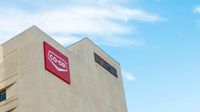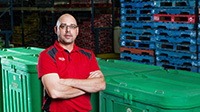Working together to fuel tomorrow
September 25, 2018
Two years ago, a team of energy industry experts from Federated Co-operatives Limited (FCL) and the Co-op Refinery Complex (CRC) were given a big task – envisioning the future of the fuels they supply to the Co-operative Retailing System. In early 2019, the first product of this initiative – CO-OP® FLEX E-85 GASOLINE™ – will hit the market at a test location in British Columbia.
“The goal here is to develop a strategy for FCL to remain competitive and relevant in the low-carbon environment we are all striving towards,” said Gurpreet Bhatia, Product Supply Manager with CRC in Regina, Sask.
“We are continuously looking at what options we have as an entity to reduce our carbon footprint and continue to meet the needs of Western Canadians.”
Identifying solutions
In the coming years and decades, provincial and federal regulations will require transportation fuel suppliers to lower the carbon intensity of their products. One way to achieve this is by producing new fuel blends.
Typically, the regular gasoline produced at CRC is a fuel blend containing up to 10 per cent ethanol, a feedstock produced from renewable sources like wheat, most of which is sourced from within Western Canada. Drivers with Flex Fuel Vehicles, however, can use fuels containing much higher percentages of ethanol – up to 85 per cent (E-85).
“There’s more renewable content,” said Kevin Mack, Energy Products Development Manager with FCL. “It brings the carbon intensity value down and you get a cleaner fuel.”
Bringing innovation to the pump
Today, Flex Fuel Vehicles are available from most major auto manufacturers, but owners have had few – if any – opportunities to take advantage of the technology built into their vehicles.
In British Columbia, the team identified an opportunity to bring a new E-85 fuel to market and provide those drivers with an alternative to regular gasoline.
Teams from FCL and CRC collaborated to identify a suitable retail location, solve storage and transportation challenges and test the blended product to ensure it meets every specification for quality.
The result is a fuel that produces significantly fewer emissions while maintaining a high level of performance. The finished product has an octane rating exceeding that of premium gasoline.
“This is our first go at a new alternative fuel offering and there’s going to be more to come,” said Mack.
“The reason why it’s so exciting is that it’s all new territory. Nobody really has the right answer and it’s just a matter of digging into it. That’s the stuff that we do here every day.”





